Garden buttercup and its cultivation
Every gardener dreams of having a garden buttercup on his plot - a flower that bewitches with its beauty and has healing properties. Thanks to the painstaking work of breeders, buttercups of various shades can now be purchased in flower shops.
Content:
- The history of the appearance of the garden buttercup
- Types of buttercup and its healing properties
- Growing a garden buttercup
Buttercup garden is one- and perennial. And if you want this plant to decorate the site every year, you should definitely take this factor into account.
The history of the appearance of the garden buttercup
The amazing buttercup appeared in Turkey, and in the 16th century it was brought to England. For a long time, this flower was not inferior in popularity to a tulip. After some time, they undeservedly forgot about him. And now, gardeners have again turned their attention to this magnificent plant with bright luxurious flowers.
Buttercup has many names. Ranunculus, Adonis, Fierce color, Pimple, night blindness - this is what the people call it, the Italians call buttercup golden buttons, and the Romans call a poisonous tooth, a ram's tooth or an Aryan's tooth.
Many legends and interesting stories are associated with buttercups. It is said that Jesus Christ created buttercups from the stars as a gift for the Virgin Mary during Lent as a sign of love and respect.
Another legend tells how one rich and greedy merchant wanted to marry his daughter, but not to that poor guy whom she loved, but to a rich one. The offended girl scattered her father's coins, they sprouted and turned into buttercups. This is how the popular omen was born that the one who finds the buttercup will certainly become rich. Many gardeners believe that the buttercup in the garden brought wealth to the home.
There are references to buttercup in classical literature. William Shakespeare in his immortal tragedy "Romeo and Juliet" gave buttercup a truly evil role. It was from this flower that the drink was prepared, which put the beautiful Juliet to sleep.
Types of buttercup and its healing properties
The world of buttercups is quite diverse. There are almost 400 species of this plant: caustic, garden, poisonous, creeping, water, field buttercups.
Each species has healing properties inherent only to it.
- The pungent buttercup is the most common; it grows in Russia, Belarus, Ukraine and Western Siberia. It is useful in that it is a natural remedy for increasing hemoglobin and the number of red blood cells in human blood, and also has an antimicrobial effect.
- The garden buttercup grows almost all over the world, there are two types of it - the African buttercup and the Persian. Plants of this variety are very useful for humans, they come in all colors except blue and light blue.
- The poisonous buttercup is distinguished by fleshy leaves and a furrowed, branched stem. Since ancient times, it has been used for pain in the abdomen, heart, and has been prescribed for fever and fear of water.
- Creeping buttercup - creeping grass with yellow flowers. It grows very quickly, releasing a mustache, and is considered a weed. This plant is poisonous, it is used very carefully for the treatment of scrofula, rheumatism and scabies.
- The difference between the aquatic buttercup and its counterparts is that its habitat is water. Small white flowers with thin underwater leaves cover all water bodies of Europe, America, North Africa, East and Siberia. Traditional healers recommend using it to stimulate the functions of the genital organs.
- Buttercup is an annual weed that grows in fields among grain plants.Used to treat furunculosis, pustular diseases and radiculitis.
Regardless of the color of the buttercup, they can all be used medicinally. The main thing is to know how to properly brew the herb in order to heal the body, and not harm it. After inhaling the smell of buttercup, you can get irritation of the mucous membrane of the eyes and nose.
Growing a garden buttercup
Growing and caring for these delicate flowers does not require special attention. They are planted en masse in flower beds or near curbs. It should be remembered that buttercups do not tolerate frost at all, therefore, during the winter period, they should be dug up and kept in a cool, dry room.
In mid-spring, the tubers are taken out, inspected for integrity and placed in wet sawdust for several days. New purchased tubers must be soaked in a weak solution of potassium permanganate for several hours.
Immediately plant in open ground Not recommended. It is advisable to plant buttercups tubers in pots with moist soil for two weeks, constantly moistening it throughout the entire germination period. When sprouts appear, you can plant flowers in open ground.
It is advisable to choose a sunny, slightly shaded place for growing a garden buttercup. The soil must be loose and soft. In such conditions, the plant blooms longer, and its petals will be brighter. It is not worth overmoistening the soil too much, as this will lead to rot of the tubers and the entire plant may die.
Buttercups begin to bloom in June. During the flowering period, it is necessary feed plant with potash fertilizers. It can be potash or wood ash.
Beautiful and healthy buttercups flowers do not require any special care. Even the most inexperienced gardener can easily cope with their cultivation. The main thing to remember is that the buttercup is afraid of frost and, in order to save it, it is better to remove it from the site to the room in advance. And in the summer, enjoy the magnificent flowers again.



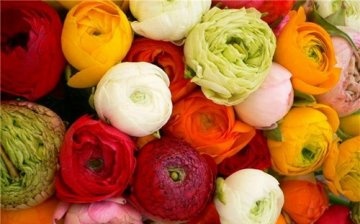
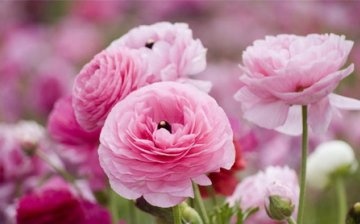
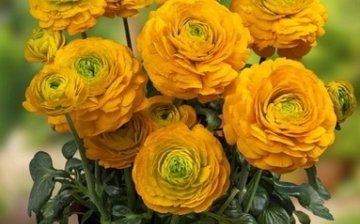
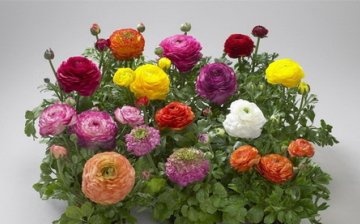




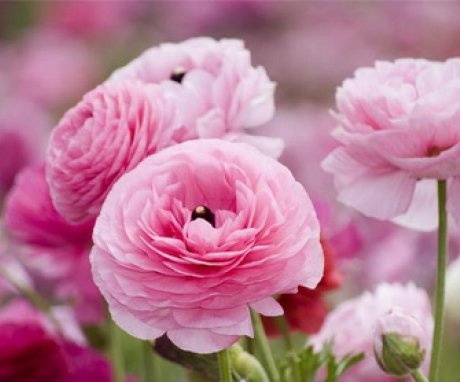
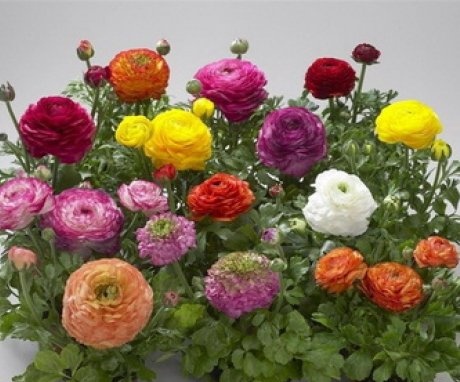
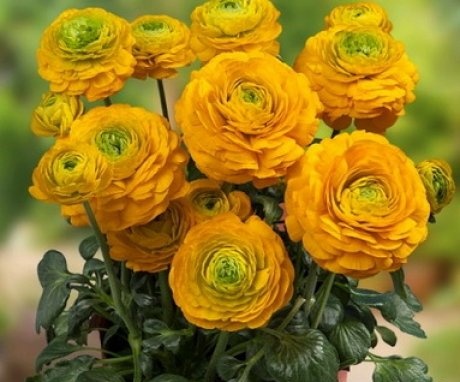
And do not tell me which kind of buttercup contains nectar (pollen) for bees. It's just that my friend planted this at her dacha - she now has a whole company of bees ... and she doesn't remember the name of the variety ...